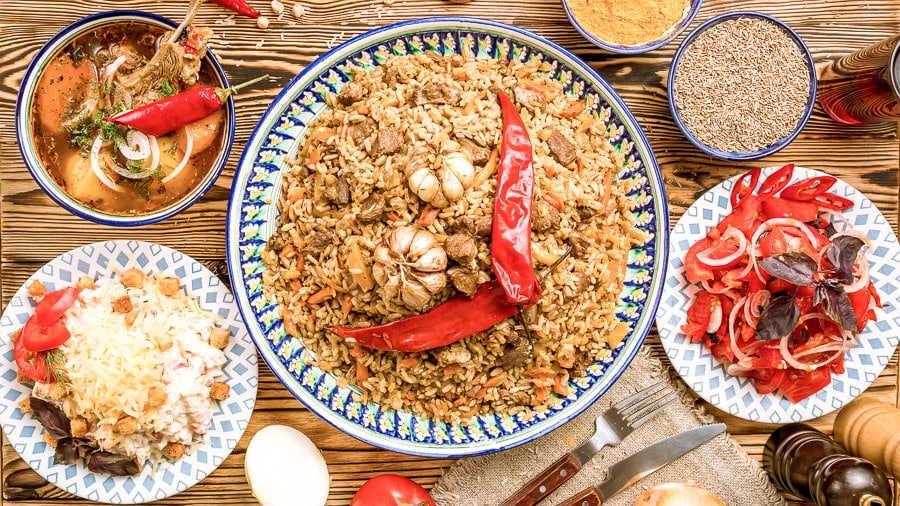Food is more than sustenance—it’s a universal language that tells stories of people, places, and histories. Determining the world’s most influential food culture is no easy task, as every cuisine carries its own weight of tradition and innovation. Yet, when we look at global impact—through migration, trade, media, and sheer deliciousness—Italian cuisine emerges as a frontrunner. From the cobblestone streets of Rome to the bustling pizzerias of New York, Italian food has woven itself into the fabric of global dining. This article explores why Italian cuisine holds such sway, diving into its history, versatility, and cultural resonance, while also comparing it to other influential cuisines like Chinese, Indian, and French. Let’s embark on a flavorful journey to uncover what makes Italian food a global icon.
Why Italian Cuisine Stands Out
Italian cuisine’s influence stems from its simplicity, adaptability, and universal appeal. Rooted in centuries-old traditions, it has spread across continents, shaping dining habits and inspiring chefs worldwide. Its emphasis on fresh ingredients and bold flavors resonates with home cooks and professionals alike, making it a cornerstone of global food culture.
A Legacy of Simplicity and Quality
At its core, Italian cuisine celebrates minimalism—think a perfect margherita pizza with just dough, tomato, mozzarella, and basil. This focus on quality over complexity allows anyone, anywhere, to recreate Italian dishes with accessible ingredients. When I first attempted homemade pasta, I was struck by how three simple ingredients—flour, eggs, and salt—could yield something so divine with a bit of practice.
Global Spread Through Migration
Italian immigrants brought their culinary traditions to the Americas, Australia, and beyond in the 19th and 20th centuries. In the U.S., Italian-American cuisine gave birth to dishes like spaghetti and meatballs, which, while not traditionally Italian, became global comfort food staples. This diaspora turned Italian food into a household name, from Buenos Aires to Sydney.
Media and Pop Culture Influence
From Hollywood movies to social media, Italian food is everywhere. Who hasn’t drooled over a scene of Lady and the Tramp sharing a plate of spaghetti? Today, Instagram reels of gooey lasagna or TikTok tutorials on tiramisu keep Italian cuisine trending, cementing its place in modern food culture.
The Historical Roots of Italian Cuisine
Italian cuisine’s global dominance owes much to its rich history, shaped by trade, conquest, and innovation. From ancient Rome to the Renaissance, Italy’s culinary evolution laid the groundwork for its worldwide appeal.
Ancient Rome: The Birthplace of Culinary Innovation
The Romans were culinary pioneers, introducing techniques like fermentation and preservation that influenced global cuisines. Their love for bread, wine, and olive oil—still staples of Italian dining—spread across their empire, leaving a lasting mark on European food culture.
The Renaissance and Culinary Refinement
During the Renaissance, Italy’s wealthy courts elevated cooking to an art form. Catherine de’ Medici, an Italian noblewoman, is credited with introducing Italian techniques like fork dining and sauces to France, influencing French cuisine’s development. This exchange shows Italy’s early role as a culinary trendsetter.
The Tomato Revolution
Tomatoes, introduced to Europe from the Americas in the 16th century, transformed Italian cuisine. By the 19th century, dishes like marinara sauce and pizza became synonymous with Italy. This adaptability—embracing a New World ingredient—helped Italian food evolve and spread globally.
Key Elements of Italian Cuisine’s Influence
Italian cuisine’s global reach is driven by its core components: iconic dishes, regional diversity, and a farm-to-table ethos. These elements make it both relatable and aspirational.
Iconic Dishes That Conquered the World
Pizza, pasta, and gelato are Italian gifts to the world. Pizza alone, with over 5 billion sold annually worldwide, is a cultural juggernaut. Whether it’s a Neapolitan pie or a New York slice, pizza’s versatility makes it a global favorite.
Regional Diversity
Italy’s cuisine is not monolithic—each region offers distinct flavors. Sicily’s seafood-heavy dishes, Tuscany’s rustic soups, and Emilia-Romagna’s rich ragùs showcase a diversity that keeps Italian food exciting and adaptable to local tastes abroad.
Farm-to-Table Philosophy
Italian cuisine’s emphasis on fresh, local ingredients aligns with modern sustainability trends. This philosophy, rooted in Italy’s agrarian past, appeals to today’s health-conscious and eco-aware diners, making Italian food feel timeless yet contemporary.
Comparing Italian Cuisine to Other Global Heavyweights
To understand Italian cuisine’s influence, let’s compare it to other major food cultures: Chinese, Indian, and French. Each has shaped global dining, but Italian cuisine’s universal accessibility gives it an edge.
| Cuisine | Key Characteristics | Global Impact | Accessibility |
|---|---|---|---|
| Italian | Simple ingredients, bold flavors, regional diversity | Pizza and pasta are global staples; Italian restaurants in nearly every country | Easy to replicate with basic ingredients |
| Chinese | Diverse techniques, umami-rich flavors, regional styles | Widespread via diaspora; stir-fries and dumplings are global favorites | Requires specific ingredients and techniques |
| Indian | Complex spices, vegetarian focus, regional variety | Popularized through migration and media; curry houses thrive globally | Spices can be hard to source in some areas |
| French | Refined techniques, rich sauces, haute cuisine | Influenced fine dining worldwide; less common in casual settings | Complex techniques deter home cooks |
Italian vs. Chinese Cuisine
Chinese cuisine, with its 3,000-year history, is a global titan, especially in Asia and the Americas. Dishes like fried rice and dim sum are beloved, but Chinese cooking often requires specialized ingredients like oyster sauce or star anise, which can be less accessible. Italian cuisine’s simpler ingredient lists make it easier for home cooks to adopt.
Italian vs. Indian Cuisine
Indian cuisine’s vibrant spices and vegetarian options have won hearts worldwide, especially in the UK and North America. However, sourcing spices like cardamom or asafoetida can be challenging outside urban centers. Italian dishes, relying on pantry staples like olive oil and tomatoes, are easier to recreate globally.
Italian vs. French Cuisine
French cuisine, with its Michelin-starred legacy, dominates fine dining. Yet, its complex techniques—like making a perfect beurre blanc—intimidate casual cooks. Italian cuisine’s straightforward recipes, like cacio e pepe, invite everyone to try, broadening its appeal.
Pros and Cons of Italian Cuisine’s Global Dominance
Italian cuisine’s influence is undeniable, but it’s not without flaws. Let’s weigh the pros and cons.
Pros
- Universal Appeal: Dishes like pizza and pasta are crowd-pleasers across cultures.
- Adaptability: Italian recipes can be tweaked to suit local tastes, like spicy pizza toppings in India.
- Health Benefits: The Mediterranean diet, rooted in Italian cuisine, is linked to longevity and heart health.
- Cultural Integration: Italian food fosters community, from family dinners to global food festivals.
Cons
- Oversimplification: Italian-American dishes like Alfredo sauce can dilute authentic traditions.
- Overcommercialization: Fast-food chains sometimes prioritize profit over quality, misrepresenting Italian cuisine.
- Regional Misrepresentation: Global menus often focus on southern Italian dishes, sidelining northern specialties like polenta.
Personal Stories: Italian Cuisine’s Global Reach
Growing up in a small Midwestern town, my first taste of Italian food was a slice of pizza at a local pizzeria run by an Italian immigrant family. The crust was crispy, the sauce tangy, and the mozzarella perfectly gooey. It wasn’t just food—it was a revelation. Years later, traveling to Naples, I realized that pizza was just the tip of the iceberg. A plate of spaghetti alle vongole (clams) by the Amalfi Coast showed me how Italian cuisine could be both simple and transcendent. These experiences, shared by millions worldwide, highlight how Italian food creates emotional connections across borders.
People Also Ask (PAA) Section
What is the most influential food culture in the world?
Italian cuisine is often cited as the most influential due to its global presence, adaptability, and iconic dishes like pizza and pasta. Its simplicity and universal appeal make it a favorite in homes and restaurants worldwide. Other contenders like Chinese and Indian cuisines are also significant but face barriers in ingredient accessibility.
Which country has the best food culture?
“Best” is subjective, but Italy frequently tops lists for its balance of flavor, tradition, and global reach. Its emphasis on fresh ingredients and regional diversity appeals to diverse palates. Countries like France and Japan also rank high for their refined cuisines, but Italy’s accessibility gives it an edge.
How has Italian food influenced global cuisine?
Italian cuisine has shaped global dining through migration, media, and trade. Italian immigrants introduced pizza and pasta to the Americas, while dishes like risotto and tiramisu have inspired chefs worldwide. Its farm-to-table ethos also aligns with modern culinary trends.
Where can I experience authentic Italian cuisine?
Visit Italy’s regions—Naples for pizza, Bologna for ragù, or Sicily for arancini—for the real deal. Outside Italy, seek Italian restaurants run by native chefs or those certified by organizations like the Associazione Verace Pizza Napoletana for authenticity.
What are the best tools for cooking Italian food at home?
Invest in a pasta maker for fresh noodles, a pizza stone for crispy crusts, and a quality olive oil for authentic flavors. Brands like Marcato (pasta makers) and Lodge (pizza stones) are reliable choices. Online retailers like Amazon or specialty stores like Eataly offer these tools.
How to Cook Italian Food at Home
Bringing Italian cuisine into your kitchen is easier than you think. Start with simple recipes like spaghetti aglio e olio or margherita pizza. Use fresh ingredients—tomatoes, basil, mozzarella—and invest in a few key tools.
Essential Tools for Italian Cooking
- Pasta Maker: For fresh, silky pasta (e.g., Marcato Atlas 150).
- Pizza Stone: Ensures a crispy pizza crust (e.g., Lodge Cast Iron).
- Immersion Blender: Perfect for smooth sauces like marinara.
- Quality Olive Oil: Extra-virgin varieties from brands like Bertolli elevate dishes.
Simple Recipe: Classic Margherita Pizza
Ingredients:
- 1 cup “00” flour
- 1 tsp yeast
- 1/2 cup warm water
- 1/2 cup tomato sauce
- 4 oz fresh mozzarella
- Fresh basil leaves
- Olive oil, salt
Steps:
- Mix flour, yeast, water, and a pinch of salt; knead into a dough. Let rise for 1 hour.
- Preheat oven to 500°F with a pizza stone inside.
- Roll dough thin, spread tomato sauce, add mozzarella and basil.
- Bake for 10–12 minutes until crust is golden. Drizzle with olive oil.
This recipe, rooted in Neapolitan tradition, is a crowd-pleaser and easy to master.
The Future of Italian Cuisine’s Influence
Italian cuisine continues to evolve, blending tradition with innovation. Chefs worldwide experiment with Italian techniques, like infusing pasta with global flavors (think kimchi carbonara). Sustainability trends also align with Italy’s farm-to-table roots, ensuring its relevance. As social media amplifies food trends, Italian cuisine’s visual appeal—think vibrant bruschetta or creamy gelato—keeps it in the spotlight.
Embracing Global Fusion
Italian cuisine’s adaptability shines in fusion dishes. In Japan, spaghetti Napolitan blends ketchup with Italian pasta, while in India, spicy masala pizza is a hit. This flexibility ensures Italian food remains a global staple.
Sustainability and Health Trends
The Mediterranean diet, with its focus on olive oil, vegetables, and lean proteins, aligns with modern health goals. Italian cuisine’s emphasis on local, seasonal ingredients also supports eco-conscious dining, resonating with younger generations.
FAQ Section
Why is Italian food so popular worldwide?
Italian food’s popularity stems from its simplicity, bold flavors, and adaptability. Dishes like pizza and pasta are easy to make and customize, appealing to diverse cultures. Its global spread via migration and media further cements its status.
What makes Italian cuisine unique?
Italian cuisine stands out for its regional diversity, fresh ingredients, and minimalist approach. Each region offers distinct dishes, from Liguria’s pesto to Sicily’s cannoli, while the focus on quality over complexity makes it universally appealing.
How can I learn authentic Italian cooking?
Take online courses from platforms like MasterClass or Eataly’s cooking school. Visit Italy for hands-on experiences or follow Italian chefs like Massimo Bottura on social media for tips. Practice with authentic recipes using fresh ingredients.
Are there health benefits to Italian cuisine?
Yes, the Mediterranean diet, rooted in Italian cuisine, is linked to heart health and longevity. It emphasizes olive oil, vegetables, and whole grains, making it a balanced choice when prepared traditionally.
Where can I buy authentic Italian ingredients?
Shop at specialty stores like Eataly or online retailers like Gustiamo for authentic olive oil, pasta, and cheeses. Local Italian delis or farmers’ markets also offer high-quality ingredients.
Conclusion: Italian Cuisine’s Enduring Legacy
Italian cuisine’s influence is a testament to its ability to transcend borders, bringing people together over plates of pasta and slices of pizza. Its simplicity, rooted in history and elevated by quality, makes it a global favorite. Whether you’re savoring a homemade lasagna or dining at a trattoria in Rome, Italian food invites you to celebrate life’s flavors. So, grab some flour, fire up the oven, and let Italy’s culinary magic inspire your next meal.



